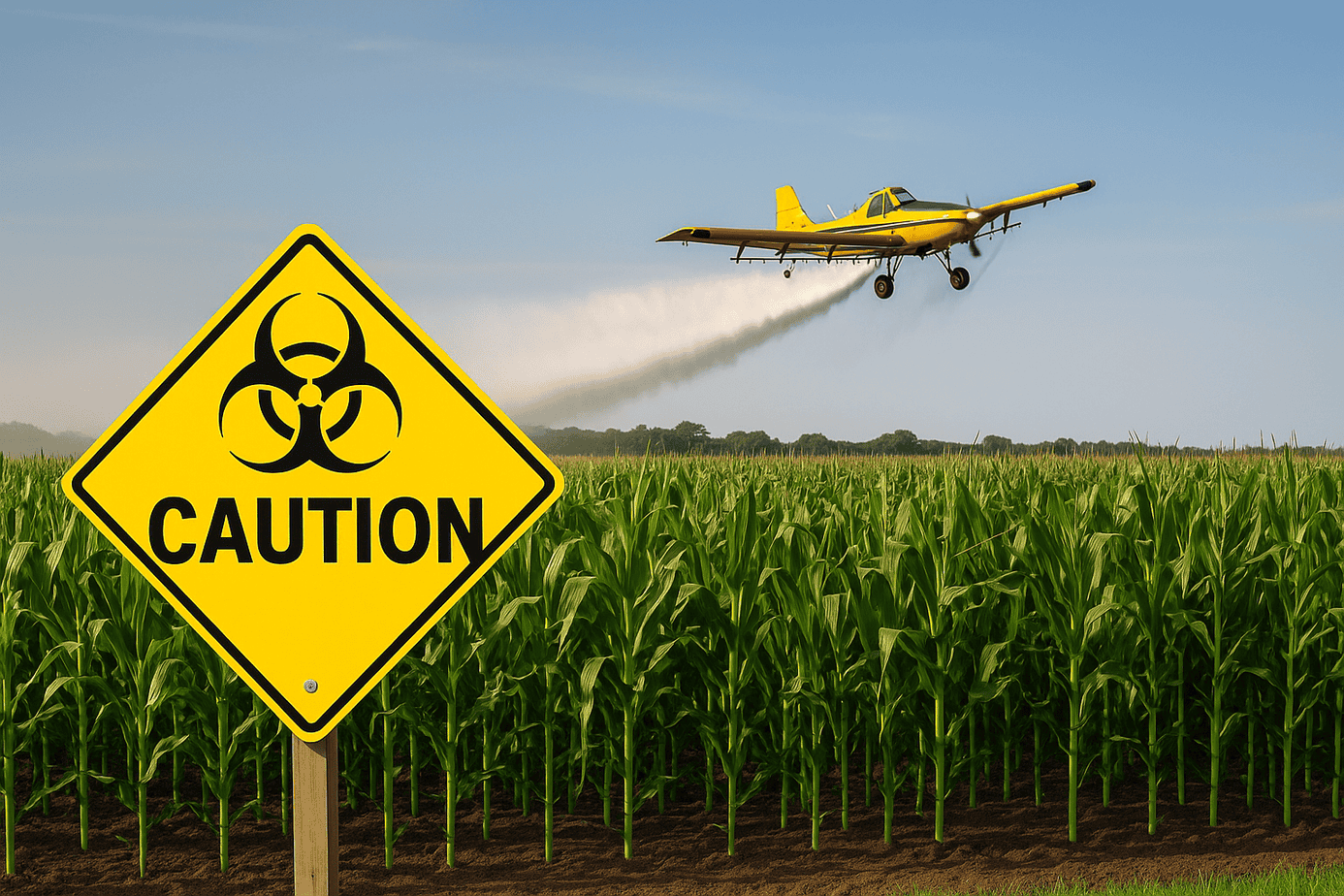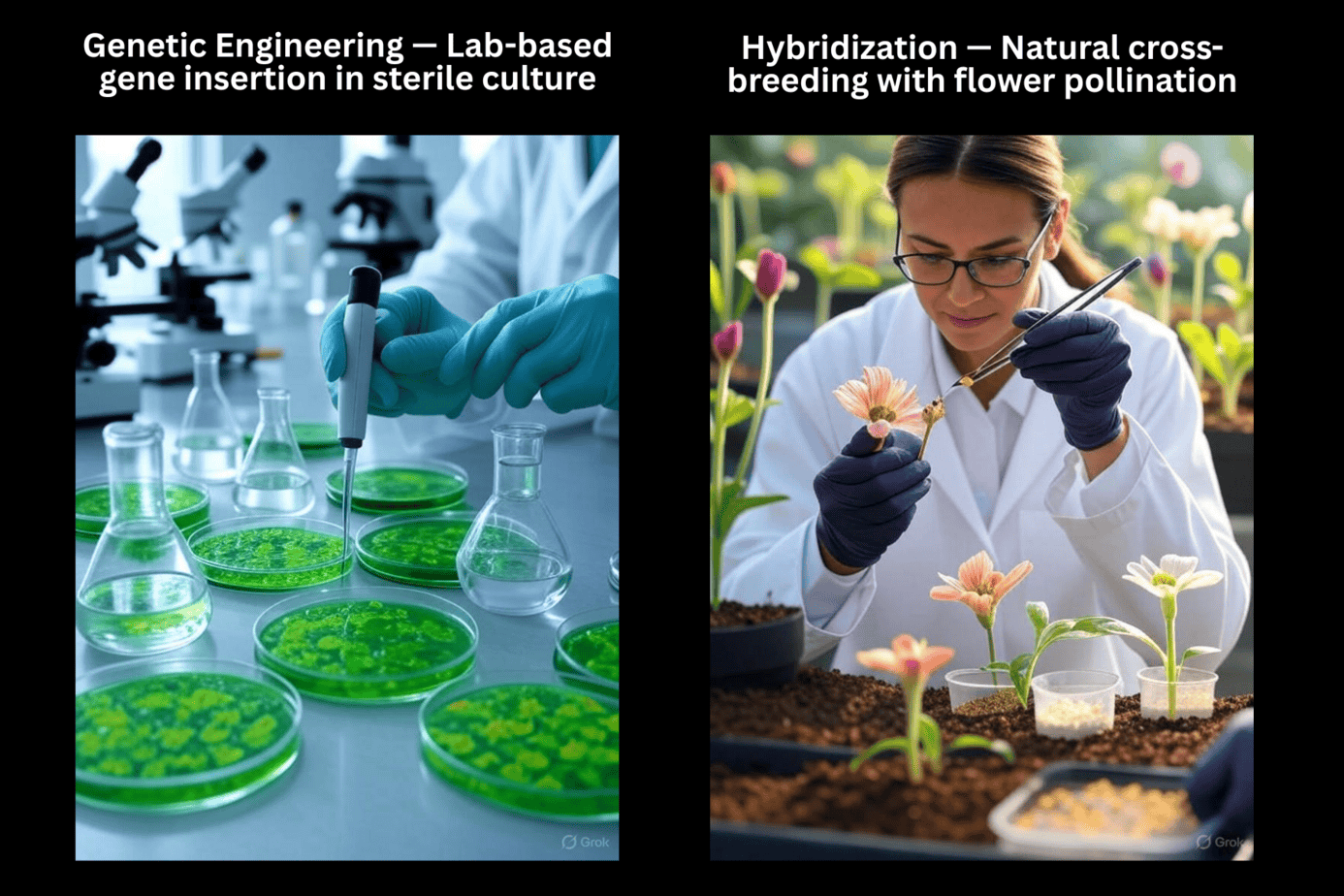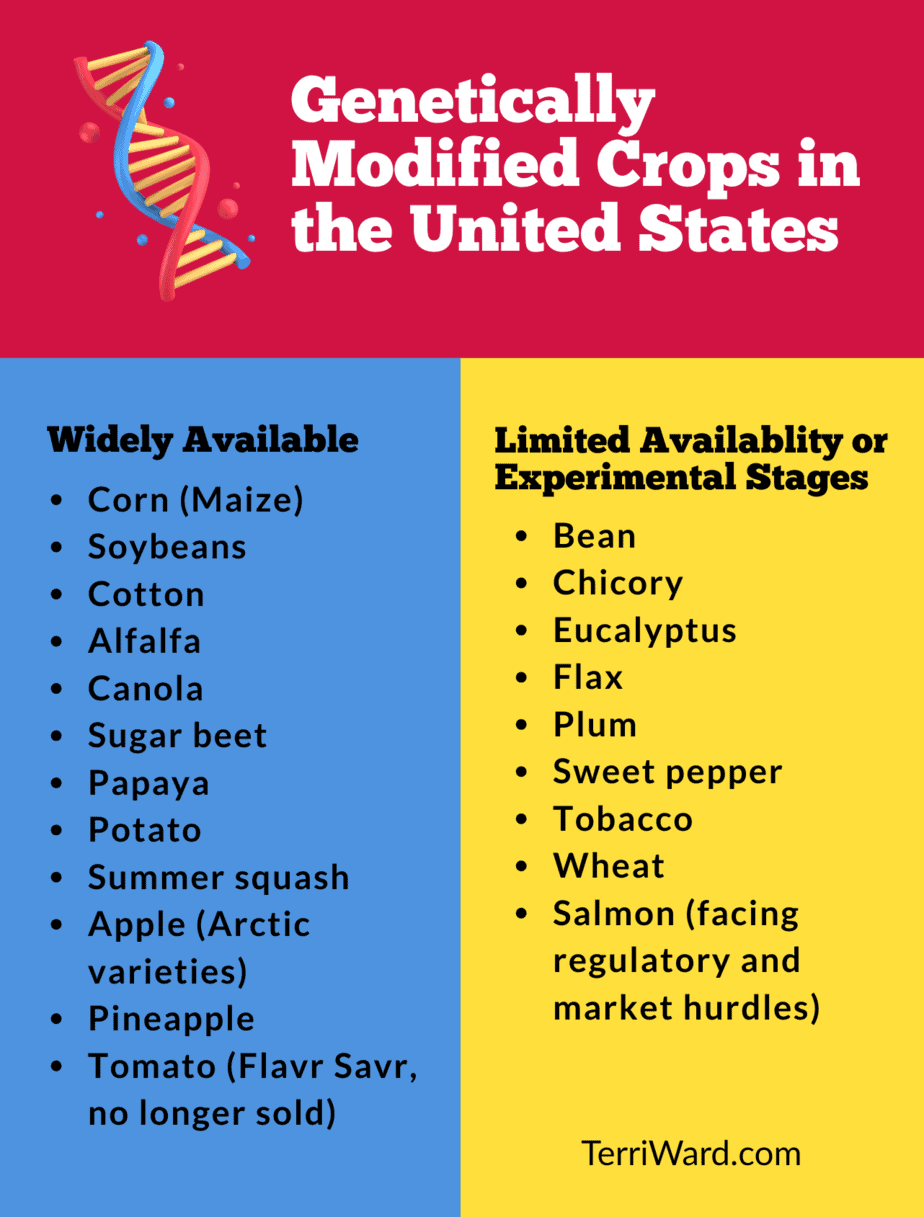GMO foods and their health risks are hotly debated topics. While marketed as innovation, GMOs raise serious concerns about their long-term impact on human health. If you’re wondering whether GMOs could be sabotaging your gut health, overall well-being, and our planet’s future, you’re not alone. Dive in to see what the science really says and why the Anti-Inflammatory Rainbow Diet™ (AIRD™) recommends avoiding them.
The AIRD™ is a faith- and science-based nutrition approach designed to support gut health and whole-body wellness. This flexible framework is covered in more detail in God’s Prescription: A Faith-Based Plan to Shift Your Mindset and Reclaim Your Natural Health. In this sixth installment of the AIRD™ series, we dive into the controversial topic of GMO foods and their health risks.
A College Poster That Changed Everything
Back in college, I hated group projects. Too often someone coasted while others carried the weight. But one project, tied to the spring science fair, was different with everyone engaged. That year’s theme was “Better Living Through Chemistry.” Ironically, our team was a bit rebellious and used a poster headline that read: “Better Living Through Chemistry?” with a question mark.
We spotlighted Roundup® herbicide—and I was forever changed. In a later chemistry class, a partner project ended up being a solo presentation on GMOs titled “What Happened to Our Food?” Although my partner flaked out, I was all in. The deeper I dug, the more horrified I became. I used to beg my dad not to use Roundup®… to no avail.
That first exposure to the science of Roundup® and GMOs stayed with me. Years later, while working as an editor for a peer-reviewed journal, I had the opportunity to review and edit Jeffrey Smith’s survey results on genetically modified foods. His work has been instrumental in exposing the risks that mainstream sources have long ignored.
Wait! Aren’t GMOs Just About Better Crops?
That’s the story we were sold. Introduced in the 1990s with promises of bigger yields, drought resistance, fewer pesticides, and feeding the world.
But GMOs weren’t created just to survive tough weather—they were designed to withstand massive amounts of glyphosate, the main ingredient in RoundupÒ. In fact, the introduction of GMO crops has skyrocketed glyphosate use over the past 25 years. Farmers spray it directly on food crops, not just weeds, and they use it to dry crops like wheat.
It’s important to understand that genetic engineering is not the same as hybridization. Hybridization—used for centuries and sometimes occurring naturally—crossbreeds similar plant species to combine desirable traits through natural reproduction. Genetic engineering, by contrast, inserts foreign genes into a plant’s DNA, often from unrelated species or even bacteria or even animals, using lab-based methods that would never occur in nature.
Initially, most of the “safety” data on GMOs came from Monsanto (now Bayer), the company who pioneered them. Alarmingly, the EPA has relied on that data, failing to hold glyphosate to safety standards required for other chemicals.
Now, decades later, independent research has raised serious concerns about GMO safety—including links to gut damage, immune dysfunction, hormone disruption, and increased inflammation.
More than 50 countries require GMO labeling or outright ban them. But in the U.S., genetically engineered ingredients are everywhere in our food supply—especially in processed foods. Corn, soy, canola, cottonseed, and sugar beet products account for the majority of GMO exposure in our food supply. However, other foods are currently produced or in various stages of the approval process (See the complete list below).
Why Do So Many People Struggle with GMOs?
In the largest-ever survey of GMO health effects, physician-reported data revealed that patients who removed GMOs and glyphosate from their diet experienced noticeable improvements in digestion, energy, weight, mood, and symptoms of inflammatory conditions.
What’s the connection? Glyphosate—the weedkiller sprayed on many GMOs. Unfortunately, glyphosate isn’t just a weed killer. Monsanto patented it as an antibiotic in 2010 (U.S. Patent #7771736)—a red flag that should’ve raised public concern because antibiotics don’t just kill “bad” bacteria. It sterilizes soils and is toxic to beneficial gut bacteria that keep your immune system strong, your digestion smooth, and your mind balanced.
Interestingly, Bt corn is genetically engineered to express Bacillus thuringiensis (Bt)—a toxin that ruptures insect stomachs. Yes, their guts literally explode. And while humans aren’t insects, emerging studies question whether these toxins may impact our own gut lining, contributing to leaky gut and immune dysregulation.
Glyphosate targets the shikimate pathway of bacteria to kill them. Humans don’t have a shikimate pathway, so companies like Monsanto (Bayer) have insisted glyphosate was “safe for humans.” However, our gut microbes have a shikimate pathway, and disrupting the gut microbiome is anything but safe.
Additionally, glyphosate damages the intestinal lining and interferes with detoxification pathways and nutrient absorption. In animal studies, glyphosate exposure has been linked to liver and kidney damage, hormonal changes, birth defects, and even tumors.
What’s Really Happened?
Naturally, glyphosate doesn’t stay put. It drifts through the air, contaminates nearby organic crops, and accumulates in the soil and water. That’s not stewardship—that’s short-term profit at the cost of long-term sustainability.
Further, nature adapts. Now, farmers face glyphosate-resistant weeds (superweeds), prompting use of even more toxic herbicides like dicamba and 2,4-D (a chemical used in Agent Orange).
Glyphosate isn’t just sprayed on the surface—it’s absorbed by the plant. That means it’s inside your food, not just on the outside.
The regulatory system has failed to protect us. Instead of requiring long-term studies, regulators often relied on industry-funded studies, some of which were short-term or lacked independent verification. Researchers who raised concerns sometimes faced professional backlash.
The Result?
Americans are being exposed to glyphosate without informed consent, and without the kind of regulatory safeguards applied to many other synthetic chemicals—all while industry profits continue to soar.
To make matters worse, clear labeling isn’t required: most processed foods containing GMOs are not transparently marked, making it nearly impossible for shoppers to make truly informed choices.
Laboratory tests have detected glyphosate in the blood, breast milk, and urine of individuals exposed through food and water.
Real-Life Tips for Eliminating GMOs
-
- Avoid the GMO foods listed in the accompanying table.
- Eat organic whenever possible. Prioritize the Dirty Dozen fruits and vegetables.
- Choose non-GMO project verified foods.
- Skip processed foods with corn syrup, soy protein, or canola oil—all usually genetically modified.
- Opt for pasture-raised and organic animal products. Livestock feed is often GMO unless labeled otherwise.
- Avoid sugar from “sugar beets” (usually GMO) and stick with organic cane sugar or natural sweeteners like raw honey, maple syrup, or dates/date syrup.
- And if you’re growing your own food? Buy non-GMO, heirloom seeds from trusted sources.
Nourishing Smart Non-GMO Substitutes
You don’t need to be overwhelmed. Start with these simple swaps:
-
- Switch to organic corn tortillas instead of conventional chips or crackers.
- Use olive, coconut, or avocado oil instead of GMO canola or soybean oil.
- Buy organic or sprouted oats for breakfast and skip instant oat packets.
- Choose grass-fed meat and wild-caught fish to avoid secondary exposure.
The Truth About ‘Organic’ and Non-GMO Foods
Some critics dismiss organic as “just marketing,” but the reality is more substantial—especially regarding GMOs and glyphosate. Certified organic foods are not allowed to contain GMOs or be sprayed with glyphosate.
Even non-GMO labeled foods may still be contaminated if they’re not organic, due to environmental drift or pre-harvest spraying used to dry certain grains, legumes, and even conventionally grown oats and wheat.
Some argue that GMOs are no worse than traditional hybrid crops and that organic food is just overpriced hype. But here’s the truth:
-
- GMOs are created in a lab, not through natural selection. These crops are engineered to produce insecticides from inserted bacterial genes or to tolerate chemical herbicides. The goal is not improved nutrition or sustainability.
- Organic foods are non-GMO by definition and free from synthetic pesticides, antibiotics, and growth hormones.
When you avoid GMOs, you’re not just avoiding modified DNA—you’re avoiding the chemical system that comes with them.
The Bigger Picture: Why This Matters
The issue of GMOs isn’t just about what’s on your plate—it’s about the systems we’re supporting.
-
- Our gut health is suffering.
- Inflammatory diseases are on the rise.
- Farmland is being degraded.
- Insects and pollinators are dying off.
- And our faith in God’s perfect design for food has been replaced by trust in synthetic shortcuts.
That’s not better living through chemistry. That’s surrendering our stewardship for convenience.
Ready to Dig Deeper?
God created real food—vibrant, nutrient-rich, whole foods—to nourish and heal. “God’s Prescription” invites us to return to that original design. Avoiding GMOs and glyphosate isn’t fear-based—it’s faith-based. It’s an act of honoring our temples and protecting future generations.
Thankfully, small changes in what you choose can lead to profound improvements in your health and stewardship of the earth.
Want ongoing support, new recipes, faith-based health tips, and a community that honors God’s design for healing?
Join my Facebook group: God’s Prescription: Healthy Guts, Healthy Temples.
Let’s walk together toward vibrant, whole-body wellness!
Sources:
- U.S. Patent No. 7,771,736. Glyphosate formulations and their use for the inhibition of 5-enolpyruvylshikimate-3-phosphate synthase (EPSPS) expression. Google Patents. https://patents.google.com/patent/US7771736B2/en
- Smith JM. Survey Reports Improved Health After Avoiding Genetically Modified Foods. Int J Hum Nutr Funct Med. 2017. International College of Human Nutrition and Functional Medicine.



